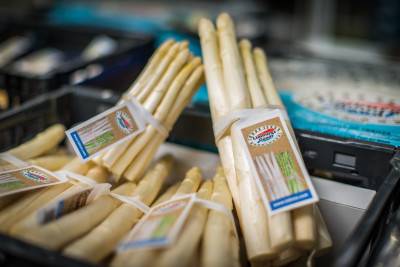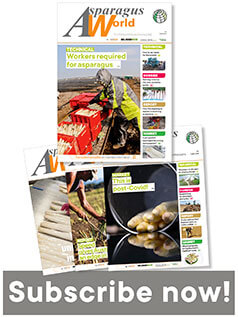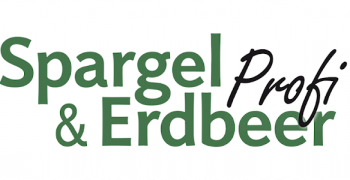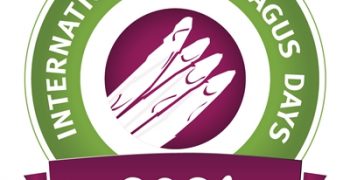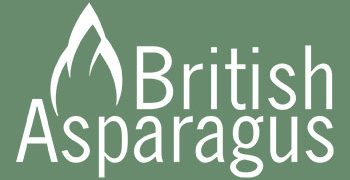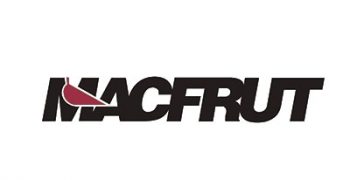Could the Dutch be convinced to eat even more asparagus?
The Dutch have long held a fondness for asparagus, with each person estimated to eat nearly 1 kg each year. And they are also known for growing high quality asparagus, which is mainly used to supply the domestic market but also exported to other parts of Europe and beyond. However, the planted area and annual production volume of ‘white gold’ in the Netherlands have been declining since 2018. At the International Asparagus Meeting, held as part of the asparagus and berry show, ExpoSE in Karlsruhe, Germany, on November 23, 2022, Teboza owner Will Teeuwen, a 3rd generation asparagus grower, sketched out the current context and the outlook for the Dutch sector.
Further concentration foreseen for Dutch asparagus production
The number of Dutch asparagus growers and the planted area has declined since 2018. The number of growers in 2014 was 800 but had dropped to 700 by 2018 and in 2021 stood at 500, while the planted area has gone from 2,800 almost a decade ago to 3,400 in 2018 and 2,900 in 2021. On average, there’s currently about 6 ha per grower and a net yield of about 6,000-7,000 kg/ha. “I think now we are in a kind of stable situation and the number of growers will still go down but the number of hectares will stay on this level,” Teeuwen said. Dutch production is concentrated in the country’s south, “which has something to do with the sandy soil but also with a bit more of a microclimate there, with warmer tem-peratures in spring.” Teboza is located in Limburg, which delivers 63% of production, with a further 33% in North Brabant and 4% dotted around other parts of Holland.
Overall consumption growth stalling, but green gaining traction
Teeuwen said fresh asparagus consumption is more or less stable in the Dutch market at an average of about 900 g per person, “which we think is quite good.” Twenty years ago, it was 200-300 g, “so we did a good job in those 20 years but in the last 5-6 years it has more or less been stable, so there’s a challenge to increase consumption,” he said. White currently accounts for 88% of
asparagus sales in the Netherlands, green 11% and purple under 1%. But the influence of green asparagus is increasing, “not very fast, but it’s increasing and I think it’s mainly because the younger people are focused more on the green asparagus but also people from abroad, and there’s quite a lot in the Netherlands, are also more into the green.”
Accommodation the biggest workforce challenge
Teeuwen said that in 2023, the minimum hourly wage in the Netherlands is €11.75 gross (up from €10.24 in 2021), which after taxes puts about €9.50 net in an employee’s pocket. But the employer cost is actually €17.63 per hour, which includes payments such as for social security and pension plans for the seasonal workers. “I always thought we had the most expensive salaries in the world but then I saw that Canada is doing quite a good job on that one also,” he quipped. Teboza’s harvest workers mainly come from Romania. It still has some coming from Greece, but these numbers are decreasing. “The biggest challenge we have at the moment in Holland is not getting the people, by being a good employer we get them, but we also have to house them,” he said.
Successful robot harvesting probably still 3-4 years away
Teboza has been doing a lot of tests with robotic harvest machines, including in its fields last year. “Unfortunately, the first one (Cerescon’s Sparter) went bankrupt in the middle of the season and that caused us a big challenge because we had to take out this machine somewhere in April. The other one (from AVL Motion), is still going on but I think we still need some more time before these machines will be suitable for harvesting asparagus on a large scale,” Teeuwen said.
Rising costs also a major headache
“The biggest challenge we have in the business, not only us as an asparagus grower but as a business in general, is how we can cope with increasing costs,” he went on to say. “We are constantly trying to innovate in our company.” In addition, Teboza is saving a lot of money on packing materials, which is good both for sustainability and reducing costs. Teeuwen said it is focusing a lot on decreasing packing materials but in the meantime, retail customers are still showing high demand for packed asparagus, “so although we decreased our use of the packaging material signi-ficantly we are packing more asparagus,” he said.







